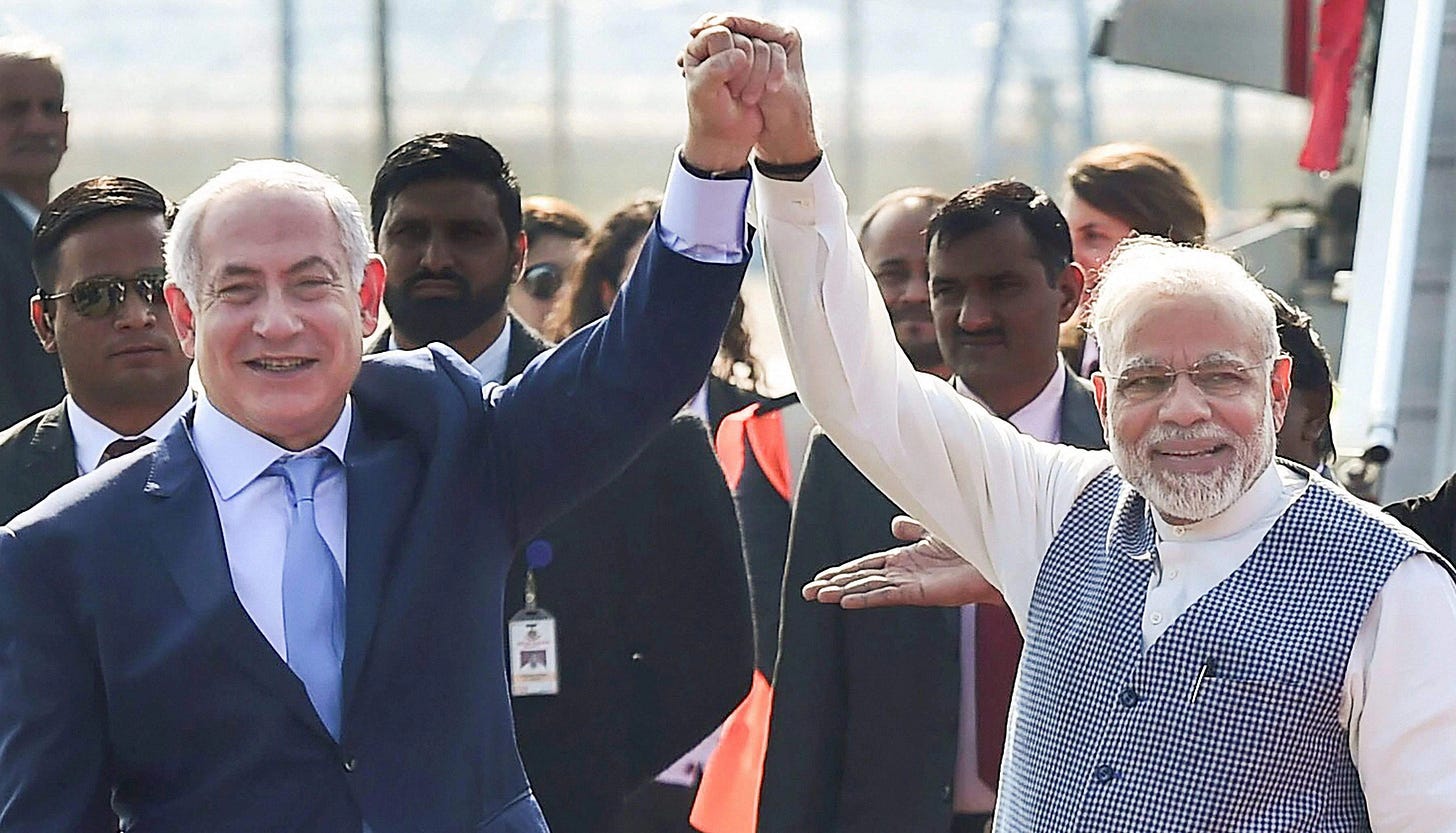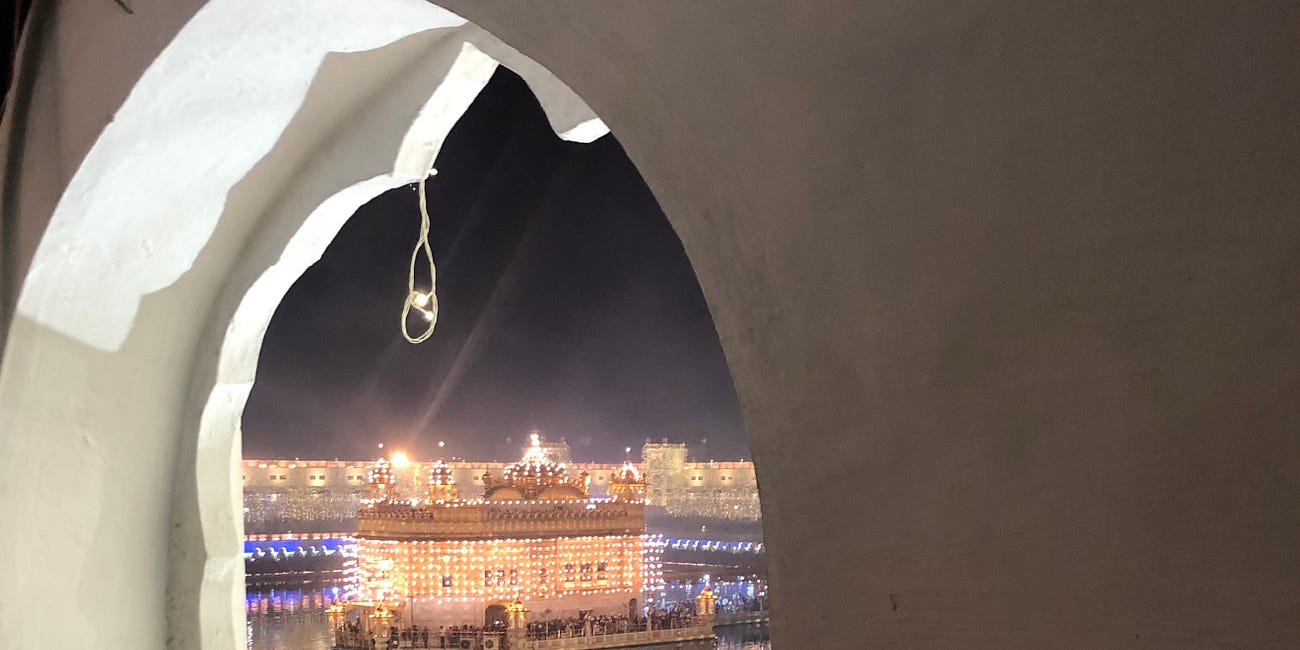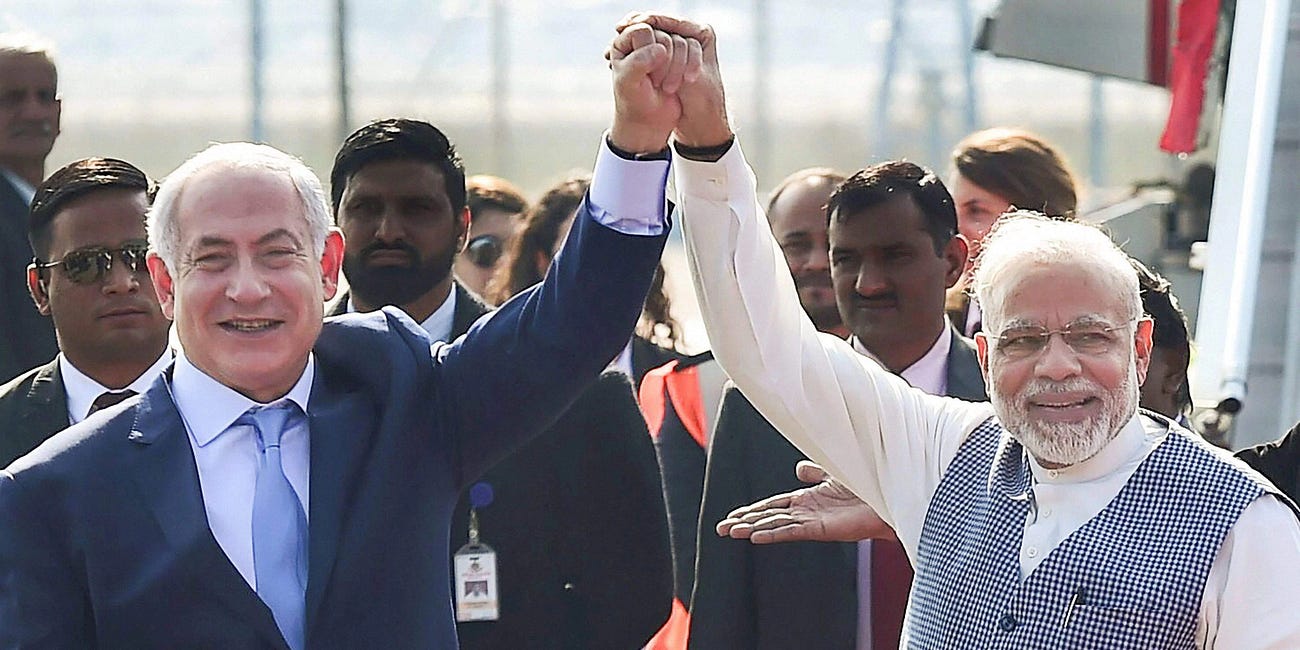India: A Sanctuary Through Ages— the Persecution and Perseverance of the Jewish Community
The Jewish Community in India: A Testament to India's Civilisational Magnanimity. NB We are not talking of the Indian Parsis— that's an entirely different community.
Jews in India: Safe Haven Since Millenia
Back in focus after Hamas's audacious multi-pronged attack on Israel this Saturday, the enduring history of the Jewish people as a persecuted community stretches back over millennia. From the tales of Moses and David to the dark chapters of European inquisitions and the incomprehensible horror of the Nazi Holocaust, the Jewish journey has been marked by resilience and fortitude. The establishment of the state of Israel post-World War II brought both hope and hostilities, leading to numerous wars and peace accords, yet peace remains elusive in the region.
Amidst this tumultuous history, we turn our attention to India, a land that has provided a safe haven for Jews for many centuries preceding the Christian era. Welcome to my humble exploration of 'Jews in India: Safe Haven Since Millennia’.
Melting Pot of Indian Civilisation
Indian civilisation, with its roots extending as far back as two millennia before Christ, has consistently been a beacon of openness, welcoming people from various corners of the globe. This hallmark of Indian culture has never discriminated on the grounds of race, colour, creed, or religious faith. Whether it's the Aryan migration from Central Asia and Eastern Europe—a theory notably posited by Max Mueller—or the arrival of various other communities over the centuries, the subcontinent has been a melting pot guided by principles of peaceful coexistence and mutual respect.
Among the myriad communities that have made India their home are the Jews, who found sanctuary from persecution and an environment where they could thrive. As I reflected on Yom Kippur, the Jewish Day of Atonement, that we recently commemorated, I attempted this article which aims to explore the intricate history of Jewish migration to India, their contemporary status, and the invaluable lessons that both India and the world at large can glean from the Jewish experience.
Ancient Beginnings: The Cochin Jews
The Cochin Jews, based in the southwestern state of Kerala, represent one of the most ancient Jewish communities in India, and arguably, one of the oldest in the world. Their origins are shrouded in myth and history; while some scholars and folklore suggest their arrival could date as far back as the time of King Solomon around 1000 BCE, the more widely-accepted historical accounts place their migration in the early Christian era. Unlike many other Jewish communities worldwide, which were often marginalised, the Cochin Jews found a safe and nurturing environment in India, enjoying royal patronage and social respect. Their primary occupation revolved around the lucrative spice trade, a key economic driver in the region, that not only brought them prosperity but also seamlessly integrated them into Kerala's economic and social fabric. Over time, this community has carved a distinctive cultural and religious identity, while also contributing significantly to the multicultural tapestry that defines Kerala today.
18th and 19th Century Migrations: Baghdadi Jews
The Baghdadi Jews, arriving predominantly in the late 18th and early 19th centuries, hailed mainly from Middle Eastern nations such as Iraq, Syria, and Iran. These immigrants did not just find a new home in India; they became influential members of society, particularly in the major commercial hubs of Mumbai and Kolkata. Unlike their Cochin counterparts, who had been part of the Indian landscape for many centuries, the Baghdadi Jews were relative newcomers. Yet, their influence in trade and commerce was swift and significant.
They swiftly integrated into the commercial fabric of these bustling cities, and their entrepreneurial spirit was evident in various sectors, from textile industries to import-export businesses. In Kolkata, their community became renowned for their trading houses and their involvement in the jute industry, a key economic sector at the time. Meanwhile, in Mumbai, they contributed to the burgeoning diamond polishing and precious metals industries. Their community centres and synagogues also became vital cultural landmarks, adding a new dimension to the religious and social diversity of these cities. Through their commercial endeavours and active community participation, the Baghdadi Jews have left an indelible mark on India's economic and cultural history.
The Bene Israel: A Community in Ancient Maharashtra
The Bene Israel community represents another fascinating chapter in the rich tapestry of Jewish history in India. According to local legends and oral history, the community's arrival in the Indian subcontinent dates back approximately 2,000 years. The tale is dramatic: a shipwreck off the coast of Maharashtra left the survivors stranded and in dire straits. They were fleeing persecution from the Galilee region, which is now northern Israel and southern Lebanon, and fate brought them to Indian shores.
Remarkably, despite the traumatic circumstances of their arrival, the Bene Israel community thrived in their new environment. They found acceptance and safety in Maharashtra, far away from the hostilities they had faced in their homeland. Over time, they integrated into the regional culture while preserving their distinct Jewish traditions. Unlike some other Jewish communities in India that were more trade-oriented, the Bene Israel took up a variety of occupations, including agriculture and military service. Several of them even attained high ranks in the Indian army.
Their synagogues, educational institutions, and cultural centres became important focal points not just for the Jewish community, but also for the wider society in Maharashtra. Their story is not merely one of survival, but also of successful integration and meaningful contribution to the cultural and social fabric of their adopted home.
The Bnei Menashe: A Community Seeking an Identity
The Bnei Menashe community, primarily situated in the northeastern states of India, introduces another layer of complexity and intrigue to the Jewish narrative in India. This community claims to be the descendants of Menashe, one of the Lost Tribes of Israel—a claim that has sparked both scholarly and religious debate for decades.
Despite the absence of definitive historical or genetic evidence to conclusively support their claims, the Bnei Menashe have persisted in their identity quest. They have been present in India for many centuries, practising customs and rituals that they argue are indicative of their Jewish heritage. The community gained considerable attention in the late 20th century when members began formally converting back to Judaism, seeking a sense of belonging to the global Jewish community.
Their journey towards rediscovering their faith hasn't been straightforward. While some religious authorities in Israel have acknowledged their claims, the broader Jewish community is far from unanimous in recognising them as one of the Lost Tribes. Nevertheless, the Bnei Menashe community serves as a fascinating case study in religious identity, heritage, and the complex interplay between faith and history.
Not only have they become an intriguing subject for academics, but their story has also captivated the imagination of people around the world who are interested in the larger questions of identity, diaspora, and belonging. The Bnei Menashe community is a living testament to the human quest for roots, and they underscore the kaleidoscopic nature of Jewish life in India.
Refuge in Goa from Inquisition: Spanish and Portuguese Jews
In the turbulent 15th and 16th centuries, the Sephardic Jews fleeing the horrors of the Spanish and Portuguese Inquisitions found sanctuary on Indian soil. Although their numbers were not as large as other Jewish communities in India, their presence added yet another intricate thread to the country's rich multicultural tapestry.
The Sephardic Jews primarily settled in Goa, a Portuguese colony at the time, where they sought to rebuild their lives away from the prying eyes of the Inquisition. While some historians suggest that they may have lived under assumed identities to avoid scrutiny, there is no doubt that India provided them with a much-needed refuge.
Unlike their predecessors, the Sephardic Jews were not as deeply involved in the spice trade or other commercial activities, perhaps due to their precarious status and the lingering fear of persecution. However, what they lacked in economic influence, they made up for in cultural contributions, enriching the Goan community with their unique customs, language, and cuisine.
Their story is one of resilience and adaptability, and it serves as a poignant reminder of the lengths people will go to in seeking religious freedom. It also stands as a testament to India's enduring commitment to providing refuge to those in need, regardless of their background or beliefs.
The 26/11 Synagogue Attacks in Mumbai
The Chabad House in Mumbai, also known as Nariman House, became the locus of international attention when it was targeted during the Mumbai terrorist attacks between November 26 and 29, 2008. Orchestrated by the Pakistan-supported Lashkar-e-Taiba militants, the assailants took over this Jewish outreach centre—run by the Chabad-Lubavitch movement—killing six individuals, including Rabbi Gavriel Holtzberg and his wife Rivka. Their toddler son, Moshe, was fortuitously saved by his Indian nanny, Sandra Samuel, who exhibited extraordinary courage. This attack was emblematic of a multifaceted assault strategy aimed not just at the Jewish community but at Mumbai's cosmopolitan essence. The Chabad House was significant not only as a synagogue and an educational and cultural centre for the local and visiting Jewish populace, but also as a symbol of global unity. By targeting a facility frequented by both Indians and international visitors, the militants aimed for global ramifications, intending to dent diplomatic relations and create a heightened sense of vulnerability among religious minorities.
The deplorable actions of the terrorists were designed with meticulous malevolence, aiming to wreak havoc on multiple fronts: religious, social, and diplomatic. The strategic selection of targets, from hotels to a railway station and religious centres like the Chabad House, was calculated to overwhelm Mumbai's emergency response capabilities. However, the response in the aftermath of the attacks showcased remarkable resilience and unity among diverse faith groups, both within India and across the globe. Rather than sowing religious discord as the attackers may have hoped, the events catalysed a review and subsequent strengthening of security measures surrounding religious institutions catering to minority communities throughout India. While the attack left an indelible scar on the Indian psyche and international relations, it also demonstrated the power of a society committed to standing united in the face of attempts to divide it.
Evolution and Migration: The Jewish Diaspora in the Modern Age
As the 20th century unfolded, significant changes occurred within Jewish communities in India, largely prompted by geopolitical developments. The establishment of the State of Israel in 1948 offered a new homeland for Jewish people worldwide, and this was an incentive for some Indian Jews to migrate. In addition, the lure of greater economic opportunities in the West also contributed to a decline in the community's numbers in India.
Yet, this exodus by no means spells the end of Jewish culture in the Indian subcontinent. Numerous small but resilient Jewish communities continue to exist in various parts of India, each preserving its unique traditions and customs. These communities not only contribute to the religious and cultural diversity for which India is celebrated but also add to the country's history of peaceful coexistence and acceptance.
From serving in the military to making notable contributions in fields like cinema and trade, the legacy of the Jewish people in India is indelible. Despite their relatively small numbers—estimated to be between 4,000 to 5,000 individuals as of my last update in 2021—they remain an integral part of India's incredibly diverse social fabric.
The resilience of these communities, in essence, mirrors the broader narrative of Indian civilisation—one that has not only withstood the tests of time but has also shown a remarkable ability to adapt, evolve, and grow, without losing sight of its core values of acceptance and coexistence.
Insights from Israel and the Jewish Diaspora
The establishment of the State of Israel in 1948 is a significant testament to the incredible resilience, unity, and organisational acumen displayed by the Jewish community, which was dispersed across the globe. Their ability to sustain their unique identity, whilst simultaneously making constructive contributions to their host countries, is a compelling case study. Communities like the Sikh diaspora can draw valuable insights from this experience, specifically in the realms of preserving cultural heritage and establishing a global network that aids in both individual and collective growth1.
Additionally, Israel serves as an instructive example for India—and indeed other nations—on how to maintain National Integrity and Internal Security under challenging circumstances. Israel's strategic and innovative approaches to security, especially in the face of being encircled by potentially hostile neighbours, offer lessons in safeguarding a nation's sovereignty without compromising its core values2.
As we consider the Jewish experience, both in India and worldwide, it's crucial to reflect on the lessons that can be applied to our own communities and national challenges. It's yet another reminder that the tapestry of Indian civilisation is enriched by each thread of diversity, including that woven by our Jewish friends. As we look forward to the future, may we continue to learn from each other in a spirit of peaceful coexistence, mutual respect, and shared prosperity.

Epilogue: Yom Kippur the Spirit of Indian Civilisation, but alas…….
As we recently commemorated Yom Kippur, a solemn day in the Jewish calendar dedicated to introspection, atonement, and reconciliation, it became apt for us to pause and reflect on the resilient spirit that has long characterised Indian civilisation. The Jewish experience in India is not merely an isolated chapter in our history but serves as a microcosm of India's enduring ethos that embraces the 'other' with open arms. This open-minded acceptance is a living testament to the broader global philosophy of "One Earth, One Family, and we share One Future," as underscored at the recent G-20 Summit held in Delhi.
In today's global landscape, where divisions often overshadow the shared human experience, India's multi-ethnic and multi-religious tapestry serves as an exemplar of how harmonious coexistence isn't merely a utopian ideal, but a tangible reality. It's an inspiring model that holds significant lessons for the broader international community in fostering peace, mutual respect, and understanding among divergent cultures and belief systems.
In the midst of recent events, marked by audacious attacks on Israel, inviting the reprisals from the latter on Gaza strip, it is poignant to note that these occurred exactly 50 years after the Yom Kippur War of 1973. These conflicts have brought destruction on both sides, underscoring the urgent need to pray for peace and a just settlement for both the Israeli and Palestinian people. History has shown that no war has been able to settle the deep-rooted issues at the heart of this longstanding conflict. It is our fervent hope that through dialogue, diplomacy, and a shared commitment to coexistence, a path to lasting peace can be forged, bringing an end to the cycle of violence and suffering that has persisted for far too long.
POST-SCRIPT:
No, Indian Jews and Parsis are not the same. They are two distinct religious and ethnic communities in India.
Indian Jews refer to the Jewish community that has lived in India for centuries. The Indian Jewish community is diverse and includes groups like the Bene Israel, Baghdadi Jews, and Cochin Jews, among others. They have their own unique religious traditions, customs, and history, which differ from those of the Parsis.
Parsis, on the other hand, are followers of Zoroastrianism and have their origins in Persia (modern-day Iran). They migrated to India in the 7th century CE to escape religious persecution in Persia. The Parsi community is known for its contributions to India, particularly in the fields of business, education, and philanthropy. They have their own religious practices and traditions that are distinct from those of Indian Jews.
In summary, Indian Jews and Parsis are two separate communities with different religious beliefs, histories, and cultural practices.
Unifying Sikhs Worldwide: Drawing Lessons from the Jewish Experience
Introduction: Discrimination and oppression have plagued communities throughout history, and the Sikh community has faced its share of challenges. To effectively counter such issues and ensure the welfare of Sikhs worldwide, it is valuable to learn from the experiences of other communities. One such community is the Jews, who have demonstrated resilience…
India's Citizenship Act: Lessons from Israel
In today's world, the intersection of immigration, citizenship, and religious identity has become a topic of intense scrutiny and debate. The Citizenship Amendment Act, 2019 (CAA) in India, with its seemingly exclusionary provisions and the ensuing controversy it sparked, provides a uniqu…













Nicest and beautiful !
Ps: long long long time ago, tried unsuccessfully to seek courtship/attention of a Jewish girl . Got declined politely with a smile ( Rabbi and father want a Jewish boy) lol
Isn’t revealing that a community that has lived in this country with us all for centuries has never sought any attention , part of any defiance , controversy and contributed always. The best lesson one can have just observing their culture and way of life. Having lived in the Jewish suburb in Toronto for a long time , I have had first hand relationships with Jewish community as my physician, attorney ,accountants even dealt with Rabbi’s ( in my former life worked with them closely for kosher certifications for our food manufacturing plants all over North America) . All these liaisons provide best experiences and ever lasting friendships.
Thank you for walking us through the tracks that get seldomly walked on.